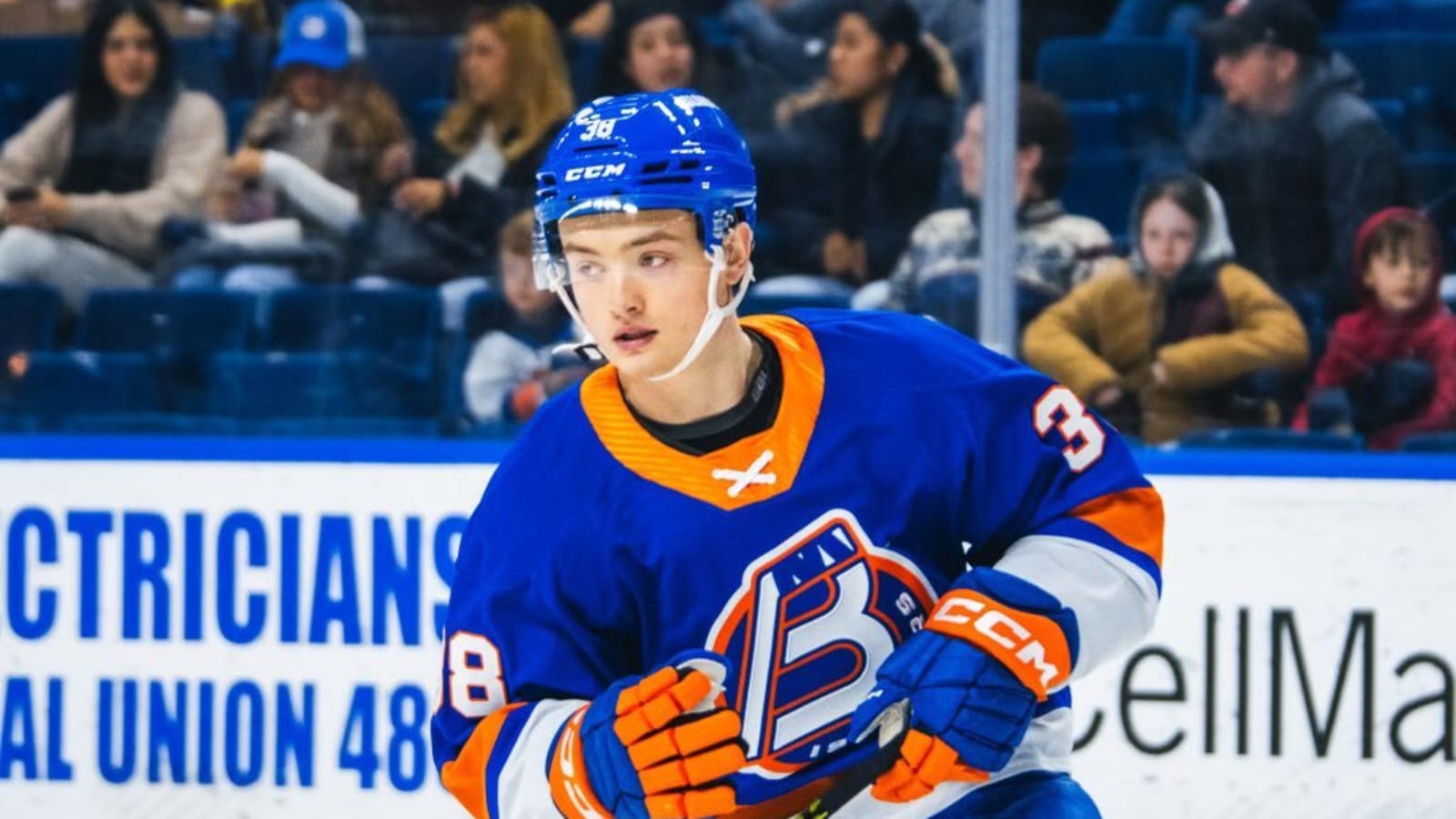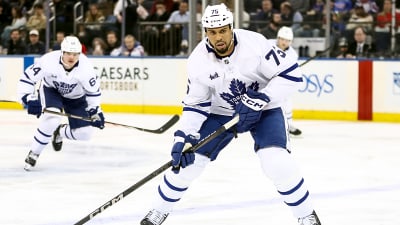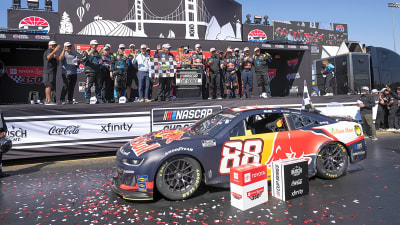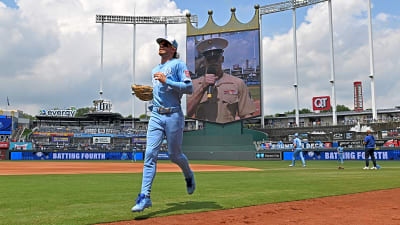
We often see highlights of a prospect’s performance and hope or anticipate they will be in the NHL soon enough. A few elite talents do that, but they are the exceptions. It takes time for players to adjust to professional hockey, and the American Hockey League (AHL) is made for developing prospects and getting them ready to make the leap to the big league.
New York Islanders’ prospect Alex Jefferies was riding high off a short stint in the AHL last season, playing 12 games down the stretch and recording four goals and seven points. Jefferies entered this season as one of the top prospects in the Islanders’ system, and for many fans, the hope was that he would pick up where he left off and add depth and a youthful presence to an otherwise aging NHL roster.
But it’s been a rough season for him and the team, with only 12 wins in 52 games. With eight goals and 15 assists, Jefferies is one of the more productive Bridgeport Islanders forwards, but he’s not carrying them. The talent is there, and eventually, Jefferies will develop into an NHL-caliber forward, but this season is a reminder that the road isn’t always a straight line (sometimes the I-95 has two lanes closed and a detour on the state border.)
The Learning Curve for Jefferies
Coming from the NCAA to the AHL is an adjustment. The league is bigger and more physical, forcing skilled players to take their hits and adapt. “It’s tough out there. There are fast and physical teams, so it’s a bit of an adjustment,” Jefferies noted after a 5-1 loss to the Providence Bruins on Feb. 26, a game where the opposition wore him and the Islanders down with their forechecking.
Along with the physical play, the league is more detail-driven,and space is hard to come by. “Just structure is real important. No turnovers, and managing the puck, Jefferies noted after the recent game. For a skilled player like him, it’s about “speed, strength, and knowing where to be” to succeed. It’s why this season has been an adjustment.
Jefferies, like a lot of skilled players, will create in space and on the rush. When the game slows down and space is hard to find, he struggles. The game against the Bruins was slower-paced, and he was left off the scoresheet, which has become all too common in recent games – he hasn’t recorded a point in the last seven contests. The AHL can humble prospects and humble them fast. Jefferies has the upside, but he’s still at least a season or two away from being NHL-ready.
Where Jefferies Can Improve
The league is about the details, and everyone needs to be in the right position at the right time. It’s why Jefferies is focused on the small things that will round out his game and make him a consistent contributor. He’s made plays in the offensive zone, but his decision-making and puck-handling have come up short this season.
Managing the puck is the key area of improvement that Jefferies mentioned. “Just making plays,” he said. “Coming out of the zone and not turning it over,” an issue that has cost the Islanders multiple games. The team has struggled to move the puck up the ice, and the offense doesn’t get set up, averaging only 2.63 goals per game. But the turnovers, especially in the defensive zone, give the opposition easy scoring chances and explains why the Islanders allow a league-worst 3.98 goals per game. Usually, the defensemen are tasked with moving the puck out of the defensive zone, but if Jefferies can establish himself as a primary puck-handler and set up the offense, it will go a long way in helping his team.
Skill is only one facet of his game. Jefferies needs to forecheck and defend, which he knows is pivotal to succeeding at every level. With the 4 Nations Face-Off in mind, he noted, “Every level it goes up, you think, it’s going to be more skill, but it’s really the structure, and you see how tight it is out there.” Even the most skilled skaters in the game are disciplined. The New York Islanders want to see their forwards play disciplined hockey, especially with head coach Patrick Roy coaching the team. For Jefferies to take that next step, it’s all about improving those areas.
Islanders Have Pieces To Help Jefferies Out
While the Bridgeport Islanders look like a lost cause with by far the worst record in the Atlantic Division, they have the infrastructure to develop a player like Jefferies. He’s played most of the season on the same line with Chris Terry and Brian Pinho, two of the team’s top scorers and also experienced veterans. “They are great mentors and teach us the little things both on and off the ice,” Jefferies noted.
The other benefit is that the NHL team can and will take their time with Jefferies. There’s no need to rush him to the NHL, and this season and next will be focused on his development. They have a new wave of prospects joining the team by 2025-26, from 2024 first-round pick Cole Eiserman to Danny Nelson and Quinn Finley. As a former NCAA player, Jefferies can play a key role in helping those players transition to the AHL just as he did.
Jefferies, like Matthew Maggio and William Dufour, are prospects fans are watching closely. With all three, the AHL is a reminder that, more often than not, it takes time and some adjustments before young players are ready to join the NHL.
More must-reads:
- NHL's 2025-26 opening night slate is a showcase opportunity for the league
- Sabres, Bowen Byram avoid arbitration with new two-year deal
- The 'No. 1 overall MLB Draft picks' quiz
Breaking News
Trending News
Customize Your Newsletter
 +
+
Get the latest news and rumors, customized to your favorite sports and teams. Emailed daily. Always free!








